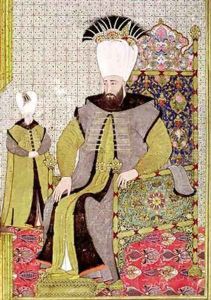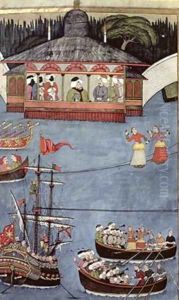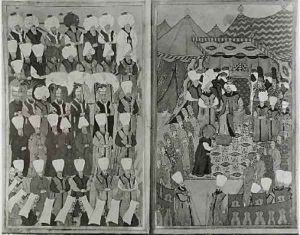Levni Paintings
Levni, whose real name was Abdulcelil Çelebi, was an Ottoman court painter and miniaturist who is considered one of the most important artists of the Tulip Period in the Ottoman Empire. He was born around 1680 in Edirne, the then-capital of the Ottoman Empire. His nickname, 'Levni', is derived from the Turkish word for 'color' or 'hue', reflecting his mastery in the use of color.
Levni received his artistic training at the Imperial Ottoman court, where he was exposed to both traditional Ottoman art and the emerging European styles. He became a master in the nakkaşhane, which was the studio where court painters worked. Levni’s talent soon brought him to prominence, and he became the chief court painter under Sultan Ahmed III. During this time, the Ottoman Empire was experiencing a period of peace and prosperity which led to a cultural and artistic renaissance known as the Tulip Period (1718-1730), named after the Sultan's fondness for tulips.
Levni's work is characterized by its sophisticated style and innovative use of color. He is best known for his illustrations in the 'Surname-i Vehbi', a festive book that depicts the circumcision ceremony of Sultan Ahmed III’s sons in 1720. This work is notable for its detailed portrayal of Ottoman society, including its costumes and daily life, and is considered a masterpiece of Ottoman illumination and miniature painting.
Levni's influence extended beyond painting; he also worked on calligraphy and illustrated manuscripts, and his style helped shape the Ottoman art of the period. He was particularly adept at portraiture, capturing the individual characteristics of his subjects with a realism that was new to Ottoman art. His figures are often shown in dynamic poses and are richly dressed in vibrant attire that reflects the opulent tastes of the era.
Levni died in 1732 in Istanbul. His legacy lived on through his influence on later generations of Ottoman artists. Today, his works are housed in various museums and collections around the world, where they are celebrated for their historical significance and artistic beauty.


